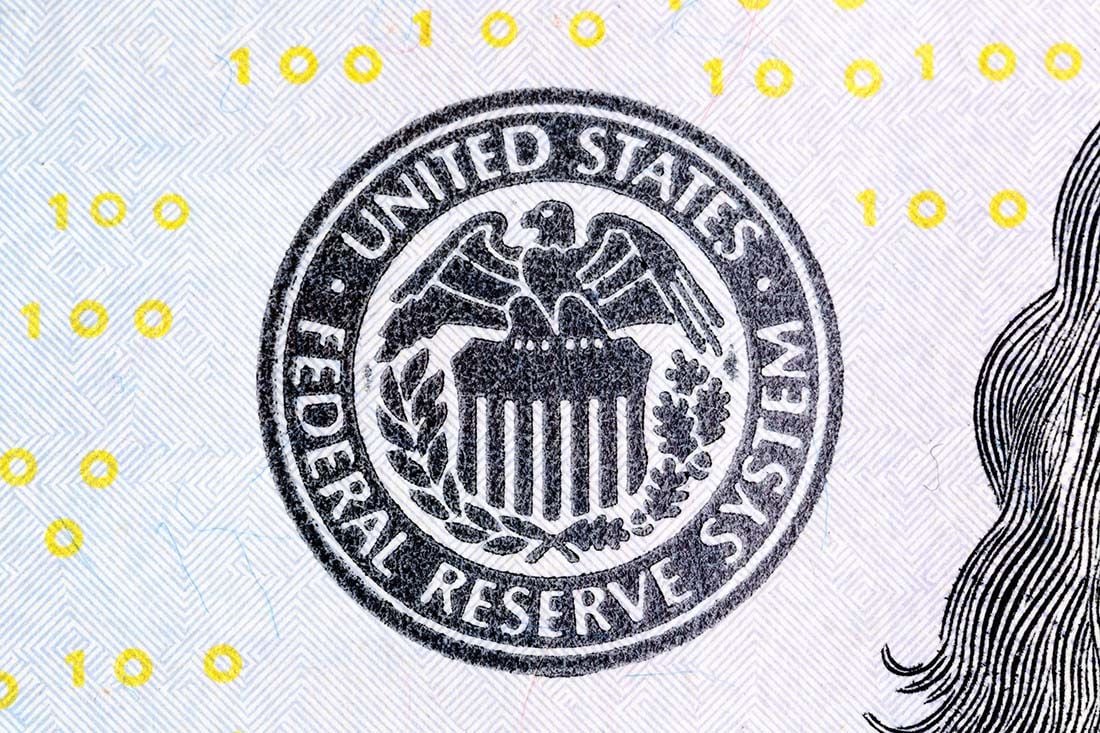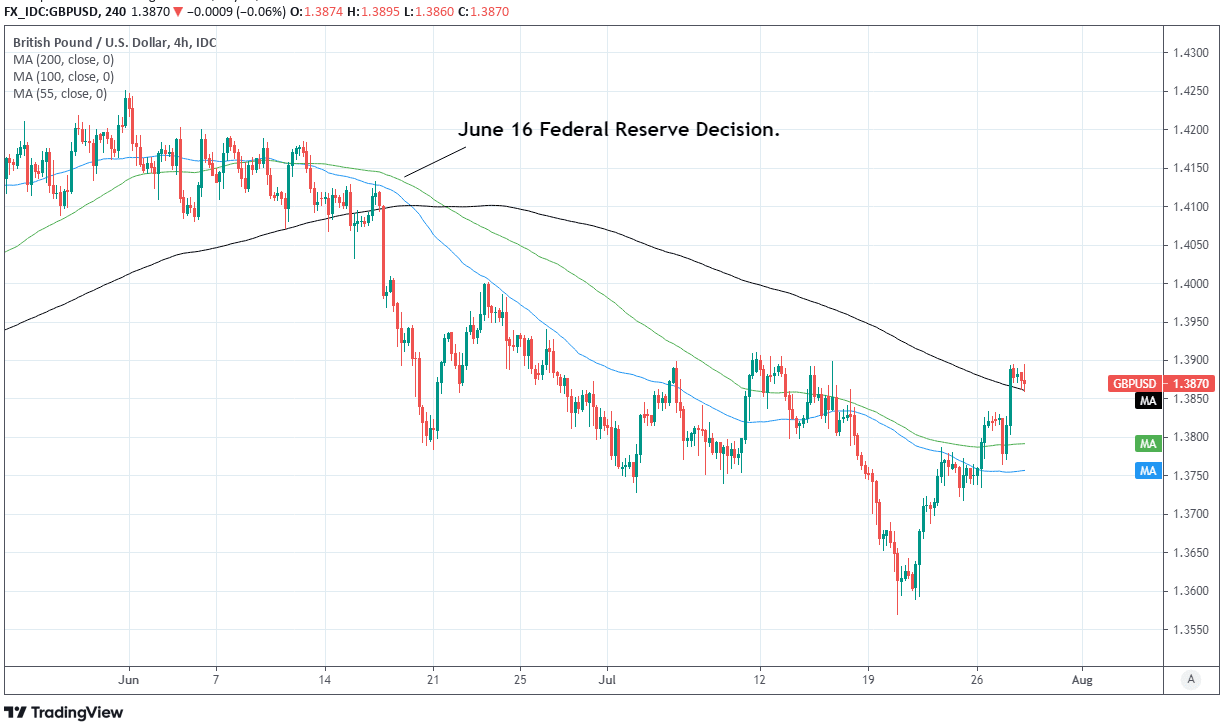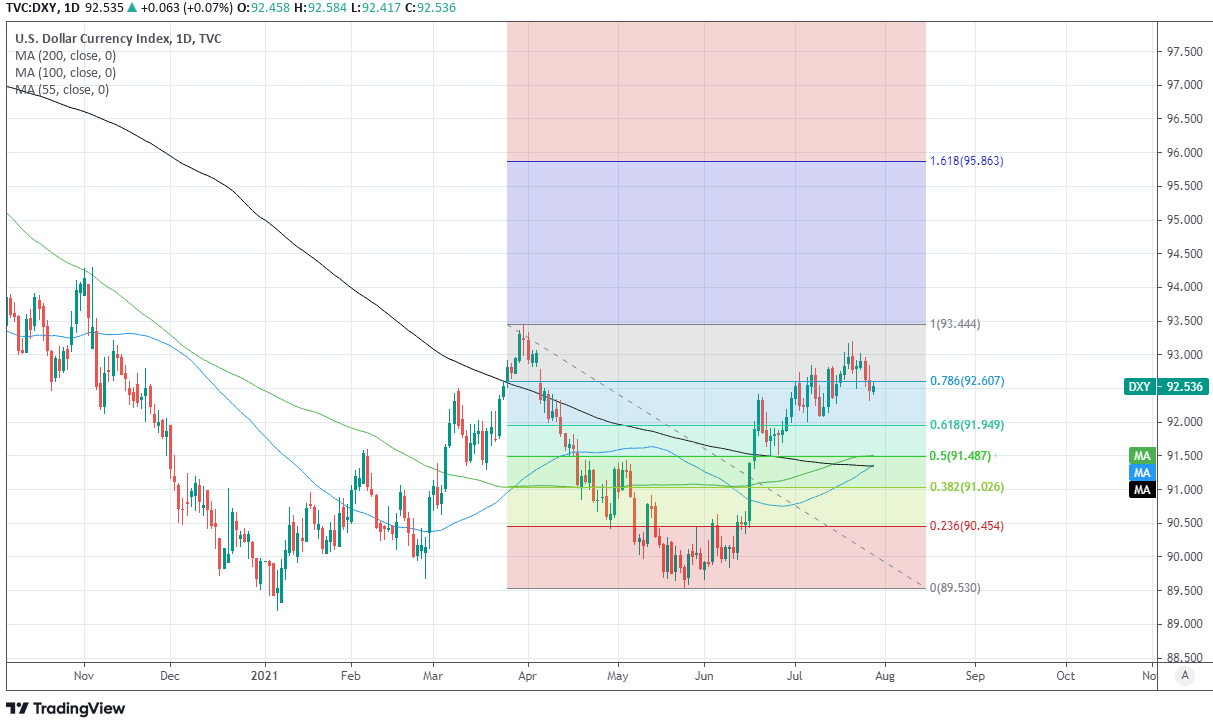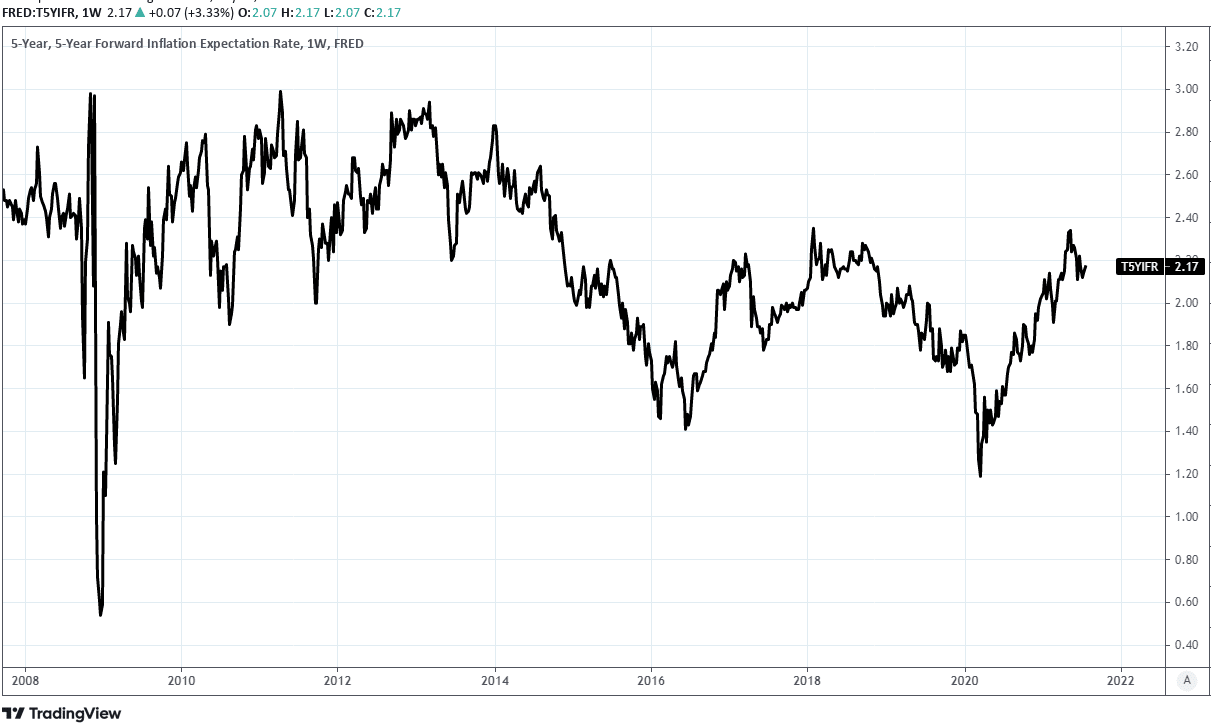Pound-Dollar Rate Hangs in Balance Ahead of Key Fed Guidance
- Written by: James Skinner
-
- GBP/USD treads water ahead of a pivotal Fed decision
- Guidance on QE tapering to steer interest rate outlook
- Sets direction for GBP as it hangs between 1.36 & 1.40

Image © Adobe Images
- GBP/USD reference rates at publication:
- Spot: 1.3793
- Bank transfers (indicative guide): 1.3410-1.3507
- Money transfer specialist rates (indicative): 1.3670-1.3696
- More information on securing specialist rates, here
- Set up an exchange rate alert, here
The Pound-to-Dollar exchange rate has pared back half of its June-to-July decline following a robust rebound from last week’s lows but the outlook for it hangs in the balance ahead of this Wednesday’s all-important Federal Reserve (Fed) monetary policy decision.
There aren’t any new economic or interest rate forecasts expected from the Fed at its July meeting but that doesn’t mean the bank’s Wednesday update won’t be able to influence the market’s expectation for the path of borrowing costs.
The outlook for the benchmark Federal Funds rate range, which is expected to be held unchanged at between 0% and 0.25% on Wednesday, will be either affirmed or altered by inferences drawn from the bank’s language in relation to its $120BN per month quantitative easing programme.
Fed policymakers are widely expected to have begun a conversation about when might be the most appropriate time to begin winding down the programme and the language used to communicate is likely to be scrutinised intensely for clues on how long the process may ultimately take.
“We expect the FOMC to drop “substantial” from “substantial further progress” – the threshold for continuing to purchase $US120bn/mth of assets. Removing “substantial” will signal the FOMC believes it will soon be appropriate to taper asset purchases and that can support the USD. But the risk is skewed to an unchanged statement if the FOMC is concerned about downside risks from the surge in the delta variant,” says Joseph Capurso, head of international economics at Commonwealth Bank of Australia.
Above: Pound-to-Dollar rate shown at 4-hour intervals.
Secure a retail exchange rate that is between 3-5% stronger than offered by leading banks, learn more.
Any tapering process is likely to involve a potentially lengthy series of incremental reductions to the amounts of government bonds and residential mortgages bought under the programme each month, and guidance relating to this will have a direct impact on market appetite for U.S. bonds as well as possible knock-on effects on the Dollar.
But those effects could be magnified by what the tapering timeline might imply about the outlook for interest rates.
“Today’s FOMC meeting has great significance as a potential source of new direction, even if the odds seem stacked against the Fed shuffling the deck quite as aggressively as it did at the 16 Jun meeting,” says Shahab Jalinoos, head of FX strategy at Credit Suisse.
“On the dovish side, this could involve heavy emphasis of potential downside risks from Covid variants, slowing rates of vaccination in the US and even perhaps the possibility of less-than-expected fiscal support given the dragging talks on US infrastructure. On the hawkish side, any fraying of confidence that inflation is transitory could be very impactful, especially given already crushed real rates,” Jalinoos explains.
The Fed had said after its June 16 meeting that it would end the emergency bond buying programme before lifting rates, and also cautioned that the “substantial further progress” toward a job market and employment recovery it wants to see met before doing so is still “a way off.”
Yet despite the cautious and contingent nature of June's tentative change in the Fed's policy stance, it was still enough to trigger widespread global market volatility and strong gains for the Dollar, which pulled GBP/USD lower from 1.41 to 1.39 in the space of a week.
Above: U.S. Dollar Index shown at daily intervals with Fibonacci retracements of April decline indicating possible areas of resistance and key moving-averages denoting possible supports.
{wbamp-hide start}
{wbamp-hide end}{wbamp-show start}{wbamp-show end}
Since June pricing in overnight-index-swap markets has shifted to imply that there’s now less than a 50% chance of an interest rate rise being announced by the end of 2022 when at the start of July price action in the same market had implied that a December 2022 rate rise was a done deal.
The ebbing of these expectations, combined with other factors, may have played a role in stabilising the Pound-to-Dollar exchange rate during the early weeks of July and before last week’s crushing declines, which have since been reversed.
“Investors have been poring over recent speeches of FOMC members looking for indications that they have moved closer to policy normalization. By the looks of it, there still seems to be no consensus at the Fed on the need to reduce stimulus,” says Valentin Marinov, head of FX strategy at Credit Agricole CIB.
“Recent interactions with clients have suggested that investors are expecting the Fed to stick with its patient approach.We therefore think that the bigger risk on the day would be a ‘hawkish surprise’ similar to the June policy meeting,” Marinov warns.
Much of the anticipation and recent volatility has roots in higher-than-expected and above-target inflation numbers, which have given rise to concerns in some parts of the market and commentariat that the bank was ‘overstimulating’ the U.S. economy in its recuperation from the coronavirus crisis.
Above: Changes in U.S. 5-year ahead inflation expectations.
It’s inflation that central banks are seeking to manage, within the context of predefined targets, when they tinker with interest rates and other monetary policies though the Fed and others have said that they’re prepared to look past recent increases above what are generally 2% target levels in the developed world in the belief that such increases are only “transitory” and that these could promptly be followed by a period of inadequate inflation.
Expectations of the Fed were lifted in June when its rate setters indicated, using a dot-plot of their own individual forecasts, that borrowing costs could begin rising as early as late 2022 and likely by late 2023, but with investors less confident of that outlook by Wednesday this week, the 19:00 decision and guidance from the Fed could potentially cut either way for the Pound-to-Dollar exchange rate.
The Pound-to-Dollar exchange rate just beneath 1.39 but a fraction above the lows established immediately after June’s update from the U.S. central bank, having found support around the 1.3571 level last week and with technical analysts suggesting that any advance above 1.3911 could create scope for a retest of the 1.40 handle if-not a move above it.
“GBP/USD is bid near term following the erosion of the top of the short term down channel. We look for a deeper rally to the 1.3910/13 50% retracement and the 12th July high, and there is scope for the 55-day ma at 1.3971,” says Karen Jones, head of technical analysis for currencies, commodities and bonds at Commerzbank.
“To reassert the up move, the market will need to clear the 1.4018 pivot. While capped here, near term strength will be regarded as corrective,” Jones says.
Above: Pound-to-Dollar rate shown at daily intervals with Fibonacci retracements of June-to-July decline and key moving-averages indicating possible areas of resistance.









